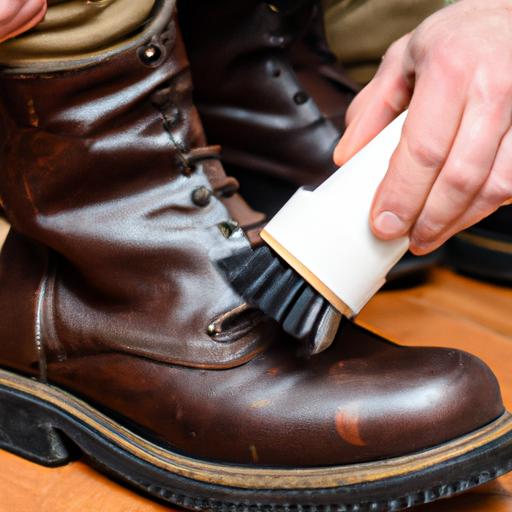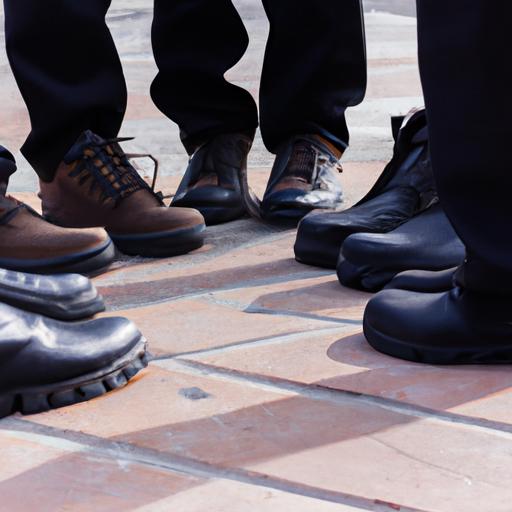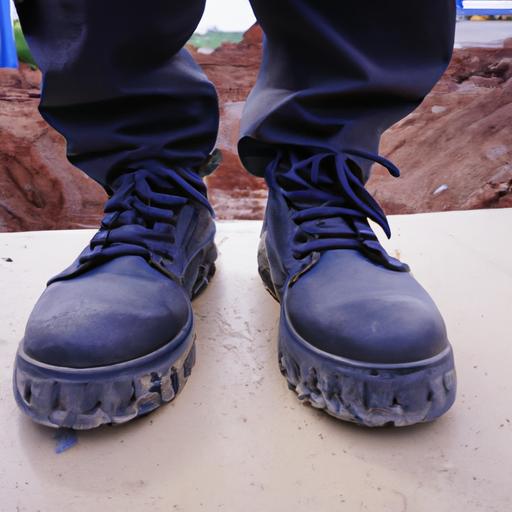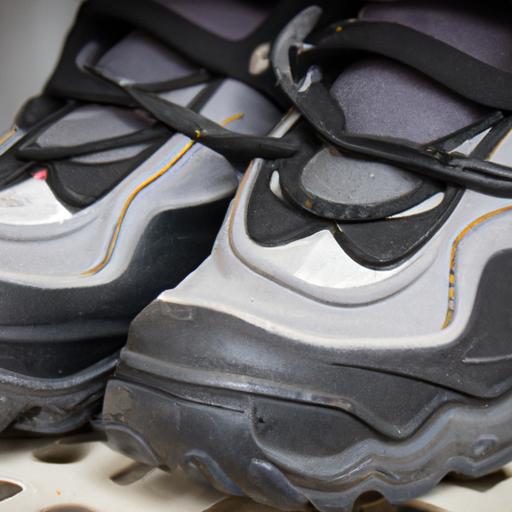Footwear is not merely an essential part of our daily attire; it is a statement of our personality and style. We invest our hard-earned money in finding the perfect pair that complements our outfits and makes us feel confident. But have you ever considered the significance of maintaining your footwear? In this article, I will shed light on the importance of footwear maintenance and the wide array of benefits it brings.
A. Importance of maintaining footwear
When we talk about footwear maintenance, we often overlook its significance. However, taking proper care of our beloved shoes is crucial for various reasons. Firstly, regular maintenance helps preserve the longevity of our footwear. By implementing simple cleaning and storage techniques, we can extend their lifespan significantly. This means fewer trips to the store and more savings in the long run.
Secondly, well-maintained shoes also contribute to our overall health and comfort. Through regular cleaning, we can eliminate dirt, dust, and bacteria that accumulate over time. This not only prevents unpleasant odors but also reduces the risk of developing foot-related infections or allergies. Proper maintenance also ensures that our shoes maintain their original shape, providing the necessary support and cushioning to keep our feet comfortable throughout the day.
B. Benefits of regular maintenance
Apart from the practical aspects, there are several benefits to be gained from maintaining your footwear. Firstly, it allows us to make a lasting impression. Imagine stepping into a room with scuffed shoes versus smoothly polished ones. Well-maintained shoes not only enhance our overall appearance but also reflect our attention to detail and personal hygiene. They speak volumes about our professionalism and create a positive impression in both personal and professional settings.
Furthermore, regular maintenance helps us save money in the long run. By investing a little time and effort into caring for our shoes, we can prevent potential damage and avoid costly repairs or replacements. It’s a small price to pay for the long-term durability and prolonged lifespan of our favorite footwear.
In conclusion, maintaining our footwear is not just a chore but an essential practice to preserve their longevity, ensure our comfort, and make a lasting impression. By dedicating some time to clean, store, and repair our shoes, we can enjoy the benefits of prolonged durability, enhanced style, and significant cost savings. So, let’s embark on this journey together and embrace the art of footwear maintenance.
Cleaning Techniques for Footwear Maintenance
Keeping our shoes clean is a fundamental aspect of footwear maintenance. Regular cleaning not only helps maintain their appearance but also ensures their longevity. In this section, I will provide you with a step-by-step guide to clean different types of footwear, along with recommended cleaning products and tools.
A. Step-by-step guide for cleaning different types of footwear
-
Preparation: Before diving into the cleaning process, remove any loose dirt or debris by gently brushing the surface of your shoes with a soft-bristled brush or an old toothbrush. This step prevents further damage during the cleaning process.
-
Spot Cleaning: For specific stains or spots, create a gentle cleaning solution by mixing mild detergent or dish soap with warm water. Dip a clean cloth or sponge into the solution and gently blot the affected area. Avoid excessive rubbing, as it may damage the material.
-
Full Cleaning: For a thorough clean, prepare a mixture of mild detergent and warm water. Use a soft brush or sponge to apply the solution all over the shoe’s surface. Pay attention to the seams, creases, and hard-to-reach areas. Rinse the shoes with clean water to remove any soap residue.
-
Drying: After cleaning, allow your shoes to air dry naturally. Avoid direct sunlight or heat sources, as they can cause damage or shrinkage. Stuff the shoes with crumpled newspaper or shoe trees to maintain their shape during the drying process.
B. Recommended cleaning products and tools
-
Shoe Cleaner: Invest in a good quality shoe cleaner that is suitable for the material of your footwear. Look for options that are specifically designed for leather, suede, fabric, or synthetic materials.
-
Soft Brush: A soft-bristled brush is essential for removing loose dirt and debris from your shoes. Opt for brushes with natural fibers or soft synthetic bristles to avoid scratching the surface.
-
Microfiber Cloth: Microfiber cloths are gentle on most materials and are ideal for spot cleaning and wiping away excess cleaning solution. They are highly absorbent and leave minimal lint behind.
-
Mild Detergent or Dish Soap: Choose a mild detergent or dish soap that is free from harsh chemicals or bleach. These gentle cleaners effectively remove dirt and stains without causing damage.
Remember, different materials require specific cleaning methods, so always refer to the manufacturer’s instructions or seek professional advice if you are unsure. By following these cleaning techniques and using the right products and tools, you can keep your footwear looking fresh and well-maintained for years to come.
Storage Methods for Footwear Maintenance
Proper storage is paramount when it comes to maintaining the quality and longevity of your footwear. Neglecting this aspect can lead to unnecessary damage, deterioration, and even deformities. In this section, I will guide you through effective storage methods that will keep your beloved shoes in pristine condition.
A. Proper storage to prevent damage and deterioration
Storing your footwear in the right way is crucial to prevent damage and deterioration. Here are some essential tips to keep in mind:
-
Clean before storing: Always ensure your shoes are clean and dry before storing them. Lingering dirt or moisture can lead to mold, mildew, and unpleasant odors over time.
-
Invest in shoe trees: Shoe trees are an excellent investment to maintain the shape of your shoes. They help prevent creasing, maintain the integrity of the materials, and ensure a proper fit when you slip them on again.
-
Choose the right containers: Opt for breathable containers or shoe boxes that allow air circulation. Avoid storing shoes in plastic bags or airtight containers as they can trap moisture and lead to mold growth.
-
Separate and organize: Keep your shoes organized by separating them using dividers or individual shoe bags. This prevents scuffing, color transfer, and tangling of laces.
B. Tips for organizing and protecting footwear
Aside from proper storage, organizing and protecting your footwear play a vital role in maintaining their condition. Consider the following tips:
-
Categorize by usage: Group your shoes by occasion or usage to make it easier to locate them. Separate your everyday shoes from special occasion pairs to minimize unnecessary wear and tear.
-
Provide adequate space: Avoid overcrowding your shoe storage area. Overlapping shoes can cause friction, leading to damage or deformation. Allow enough space for each pair to breathe freely.
-
Avoid direct sunlight: Sunlight can fade and damage the materials of your shoes. Store them in a cool, dry place away from direct sunlight or excessive heat to preserve their color and integrity.
-
Rotate your footwear: Regularly rotate the shoes you wear to distribute the pressure and minimize wear on a single pair. This ensures that each pair gets ample rest and maintains its shape and structural integrity.
By adopting these storage methods and organization tips, you can safeguard your footwear collection and extend its lifespan. Remember, a little effort in proper storage goes a long way in preserving the quality and appearance of your beloved shoes.
Repairing Common Footwear Issues
Every shoe lover has experienced the heartbreak of a damaged pair of footwear. Whether it’s a worn-out sole, a broken heel, or a tear in the fabric, footwear problems can be frustrating. But fear not! In this section, I will guide you through the process of identifying common footwear issues and provide you with DIY repair techniques for minor problems. Additionally, I will help you determine when it’s time to seek professional repair services.
A. Identifying common footwear problems
To effectively repair your shoes, it’s crucial to first identify the common issues they may face. Some common problems include worn-out soles, loose or broken stitching, damaged zippers, worn-down heel tips, and scuffed or torn uppers. By examining your shoes closely, you can pinpoint the specific areas that require attention and repair.
B. DIY repair techniques for minor issues
Minor footwear problems can often be fixed at home with a little DIY magic. For worn-out soles, you can use shoe repair glue or rubber sole protectors to extend their lifespan. Loose or broken stitching can be easily repaired with a needle and thread, ensuring that your shoes regain their original strength. Additionally, you can replace damaged zippers with new ones, and worn-down heel tips can be replaced using replacement heel caps available at shoe stores or online.
When it comes to scuffed or torn uppers, there are several DIY solutions. For leather shoes, applying shoe polish or leather conditioner can help conceal minor scuffs and scratches. Fabric shoes can benefit from spot cleaning with mild detergent or using fabric markers to cover small tears or discoloration. However, it’s important to note that these DIY techniques work best for minor issues and may not always provide a permanent solution.
C. When to seek professional repair services
While DIY repairs can be effective for minor issues, there are times when it’s best to seek professional repair services. If you’re dealing with major damages such as severely worn-out soles, significant tears, or broken hardware, it’s advisable to take your shoes to a professional cobbler or repair shop. They have the expertise and specialized tools to handle complex repairs and ensure that your footwear is restored to its former glory.
In conclusion, repairing common footwear issues is an essential skill for any shoe enthusiast. By identifying the problems, utilizing DIY repair techniques for minor issues, and knowing when to seek professional help, you can prolong the lifespan of your beloved shoes. So, roll up your sleeves, gather your repair tools, and let’s give our footwear the care and attention it deserves.
Protecting Footwear from Environmental Factors
Footwear is exposed to various environmental factors that can cause damage and deterioration over time. To ensure the longevity of your beloved shoes, it is essential to take proactive measures to protect them from external elements. In this section, we will discuss valuable tips to shield your footwear from rain, snow, humidity, sunlight, and heat.
A. Tips for protecting footwear from rain, snow, and humidity
-
Invest in waterproofing products: Applying a high-quality waterproofing spray or wax can create a protective barrier on your shoes, preventing water and moisture from seeping in. This is especially crucial for leather and suede footwear.
-
Dry shoes properly: After exposure to rain or snow, it is vital to dry your shoes thoroughly. Stuff them with newspaper or use shoe trees to maintain their shape while absorbing moisture. Avoid placing them near direct heat sources, as this can cause damage.
-
Use shoe covers or galoshes: In rainy or snowy weather, consider wearing shoe covers or galoshes to shield your shoes from direct contact with water or slush. These protective covers act as an additional layer of defense against moisture and dirt.
-
Rotate your footwear: Giving your shoes a break and allowing them to fully dry between wears can prevent the growth of mold and mildew caused by trapped moisture. Consider having multiple pairs of shoes to alternate and extend their lifespan.
B. Preventing damage caused by sunlight and heat exposure
-
Limit sun exposure: Prolonged exposure to sunlight can fade and deteriorate the materials of your shoes, particularly those made of leather or fabric. When not in use, store your shoes in a cool, dark place away from direct sunlight.
-
Use UV protectants: To further shield your shoes from harmful UV rays, consider using specialized UV protectant sprays or creams. These products create a barrier against sun damage, preserving the color and integrity of your footwear.
-
Avoid extreme heat: Excessive heat can warp, crack, or shrink certain shoe materials. Avoid leaving your shoes near radiators, heaters, or other heat sources. Opt for proper ventilation and storage to maintain their original shape and structure.
By implementing these tips, you can effectively protect your footwear from rain, snow, humidity, sunlight, and heat. Taking proactive measures will not only extend the lifespan of your shoes but also ensure they continue to look their best, allowing you to step out confidently in any weather condition. Remember, prevention is key when it comes to preserving your favorite pairs!
Long-term Footwear Maintenance
When it comes to footwear maintenance, a proactive approach is key to ensuring long-term durability and preserving their original charm. Let’s delve into some essential practices and tips that will help you take care of your shoes and extend their lifespan.
A. Establishing a maintenance routine for extended durability
Creating a regular maintenance routine is crucial in keeping your footwear in top shape. Allocate a specific time every week or month to dedicate to their care. This routine should include cleaning, storage, and inspection. By incorporating these simple steps into your schedule, you can prevent unnecessary damage and ensure that your shoes remain in excellent condition for years to come.
B. Proper care for different materials
Different shoe materials require specific care techniques. For leather shoes, apply a leather conditioner regularly to keep them moisturized and prevent cracking. Suede shoes, on the other hand, need to be brushed gently with a suede brush to remove dirt and maintain their texture. Fabric shoes can be cleaned with a mild detergent and a soft brush. Knowing the appropriate care methods for each material will help you maintain their quality and appearance.
C. Maintenance tips for specific types of footwear
Different types of footwear, such as boots, sneakers, or heels, have their unique maintenance needs. For boots, it is essential to clean and condition the leather regularly, and for fabric boots, a waterproof spray can protect them from moisture. Sneakers often require spot cleaning or gentle machine washing, depending on the material. High heels benefit from periodic inspection and repair of worn-out heel tips. Understanding the specific requirements of your footwear will help you keep them in optimal condition.
In conclusion, long-term footwear maintenance requires a proactive approach and attention to detail. By establishing a regular maintenance routine, understanding the care needs of different materials, and focusing on the specific requirements of each type of footwear, you can extend their lifespan and keep them looking their best. Remember, a little effort goes a long way in preserving the beauty and durability of your beloved shoes.



